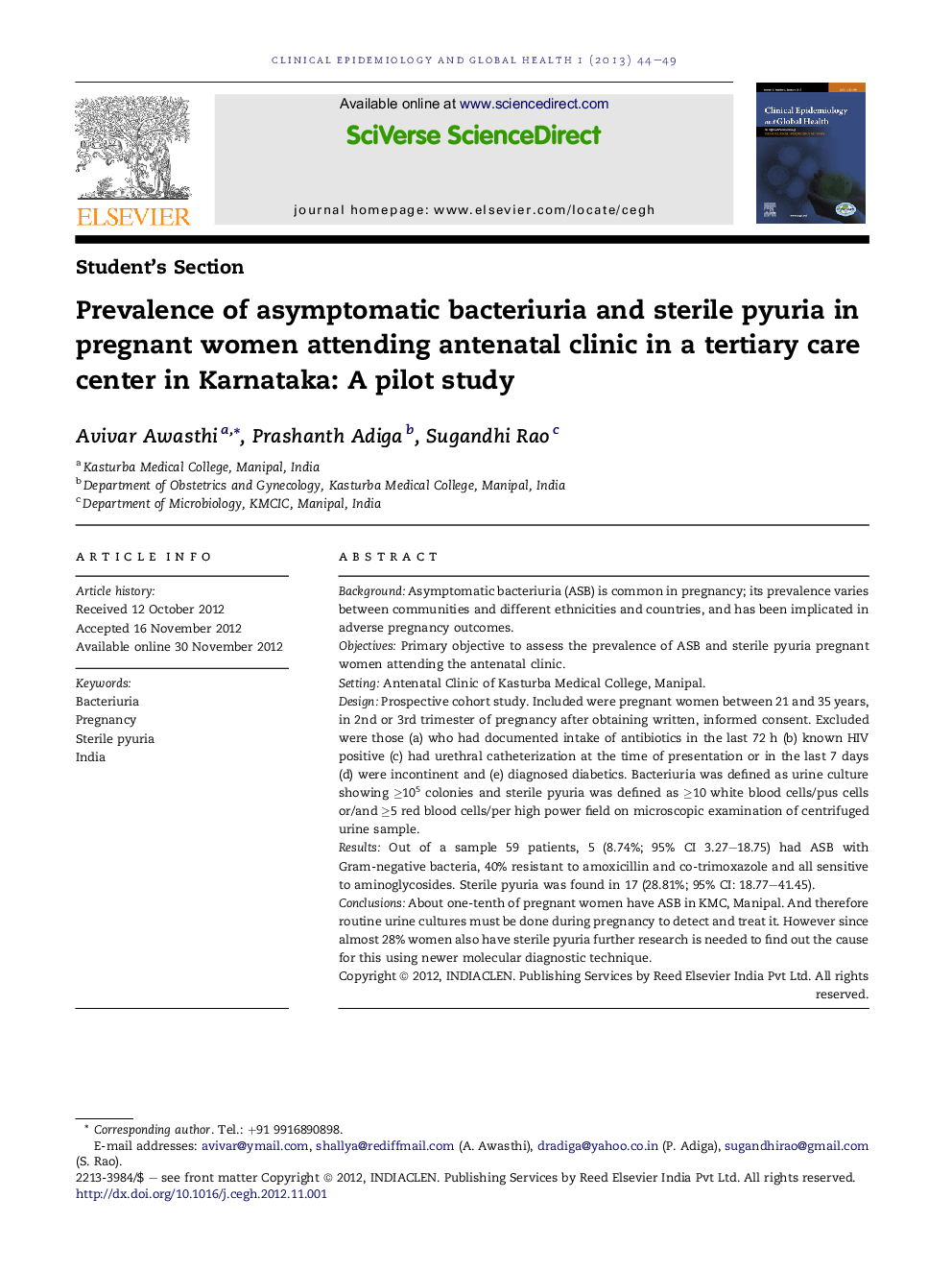| Article ID | Journal | Published Year | Pages | File Type |
|---|---|---|---|---|
| 3396355 | Clinical Epidemiology and Global Health | 2013 | 6 Pages |
BackgroundAsymptomatic bacteriuria (ASB) is common in pregnancy; its prevalence varies between communities and different ethnicities and countries, and has been implicated in adverse pregnancy outcomes.ObjectivesPrimary objective to assess the prevalence of ASB and sterile pyuria pregnant women attending the antenatal clinic.SettingAntenatal Clinic of Kasturba Medical College, Manipal.DesignProspective cohort study. Included were pregnant women between 21 and 35 years, in 2nd or 3rd trimester of pregnancy after obtaining written, informed consent. Excluded were those (a) who had documented intake of antibiotics in the last 72 h (b) known HIV positive (c) had urethral catheterization at the time of presentation or in the last 7 days (d) were incontinent and (e) diagnosed diabetics. Bacteriuria was defined as urine culture showing ≥105 colonies and sterile pyuria was defined as ≥10 white blood cells/pus cells or/and ≥5 red blood cells/per high power field on microscopic examination of centrifuged urine sample.ResultsOut of a sample 59 patients, 5 (8.74%; 95% CI 3.27–18.75) had ASB with Gram-negative bacteria, 40% resistant to amoxicillin and co-trimoxazole and all sensitive to aminoglycosides. Sterile pyuria was found in 17 (28.81%; 95% CI: 18.77–41.45).ConclusionsAbout one-tenth of pregnant women have ASB in KMC, Manipal. And therefore routine urine cultures must be done during pregnancy to detect and treat it. However since almost 28% women also have sterile pyuria further research is needed to find out the cause for this using newer molecular diagnostic technique.
